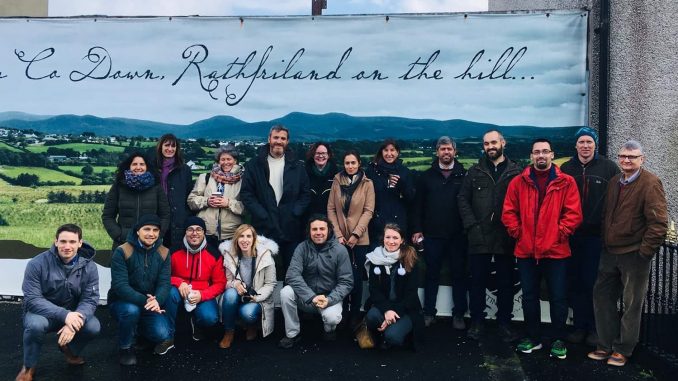
Belfast, Northern Ireland, was the place selected to host last April’s ALICE Project Board Meeting (from the 3rd to the 5th), which was organized by the local partner, Agri-food and Biosciences Institute (AFBI).
As it was expected and planned, during the meeting each partner shared the advances and expectations on the Case Studies and Work Packages regarding, not only habitat mapping, landscape studying, ecosystem services characterization and other technical aspects of the project, but also the participatory process that the Portuguese, Spanish and French Case Studies had already began, by having hosted the first Stakeholder Workshops.
As usual, during this meeting ALICE partners also got to visit some sites of the Case Study, which in Northern Ireland is the Carlingford Lough.
During Carlingford visit partners met Matthew Busby of the Mournes Heritage Trust to discuss issues of wildfires within Mournes area.
Located in the East Coast of Ireland, straddling the border between Northern Ireland and the Republic of Ireland, this catchment is dominated by a mixture of intensive pasture and arable land, natural grassland, moors and heathland, big forest and graze areas, and small agricultural ones.
Carlingford Lough contains an Area of Special Scientific Interest (ASSI), an Area of Outstanding Natural Beauty (AONB) and a RAMSAR site.
The main activities that characterize the area are linked to sheep-farming, pastoral agriculture and tourism, with nature-based recreational activities (for example walking and biking trails), while fishing is free but boat fishing is not permitted.
At the moment, the main problems affecting the catchment are land abandonment and human made fires that then have repercussions on water quality because of soil erosion and high runoff in precipitation events. These issues need management and action for both maintaining forest and natural heritage and avoiding fire events and/or expansion. So a better study of the landscape and weather and environmental variables is needed. Understanding and identifying good examples of Blue and Green Infrastructures and practices is essential to build a more resilient environment to Climate Change.
